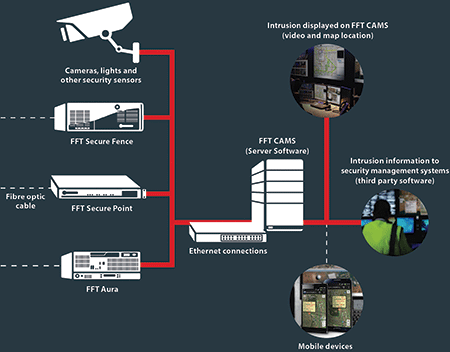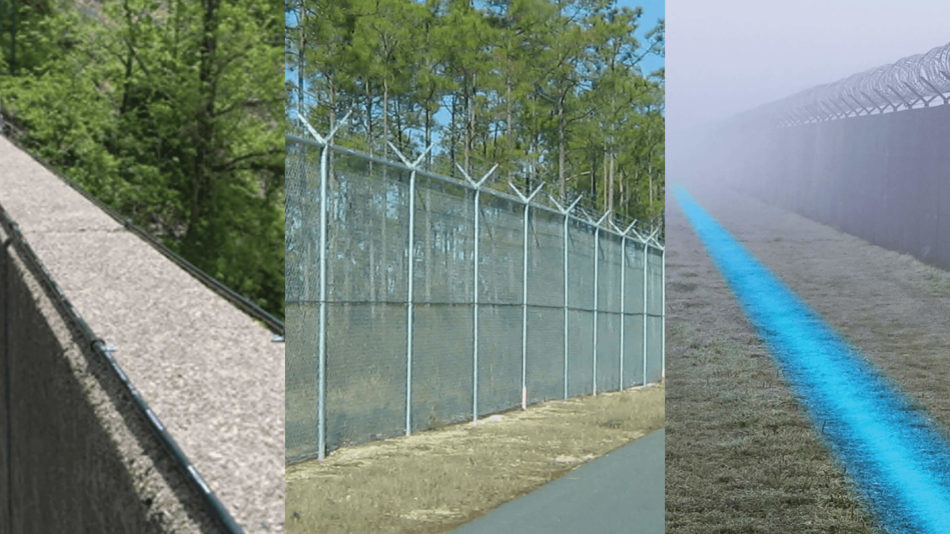How to Decide on a Fiber Optic Security System for Maximum Protection and Speed
How to Decide on a Fiber Optic Security System for Maximum Protection and Speed
Blog Article
Improve Your Safety With Advanced Fiber Optic Safety Systems
In an age where security is extremely important, advanced fiber optic safety systems present a compelling option for enhancing safety throughout different settings. These systems not just boast remarkable transmission capacity and speed for high-resolution monitoring however likewise supply remarkable durability versus exterior disturbances. As organizations progressively look for reputable methods to shield their assets, the integration of ingenious modern technologies like AI and IoT within fiber optic structures elevates necessary questions regarding their efficiency compared to traditional systems. What implications do these improvements hold for future safety actions?
Benefits of Fiber Optic Safety And Security
Using the advantages of fiber optic technology significantly enhances security systems throughout different applications. Among the main benefits is the increased data transfer ability, enabling the transmission of big amounts of data at high rates. This is specifically essential for real-time video security, where high-resolution feeds can be sent out without latency, guaranteeing immediate feedback abilities.
Furthermore, fiber optics show remarkable resistance to electromagnetic disturbance, which is crucial in atmospheres with prospective signal interruptions. This integrity makes sure constant efficiency in important safety and security procedures. Fiber optic cables are much less prone to touching and unauthorized gain access to compared to typical copper electrical wiring, thereby improving information integrity and confidentiality.
One more significant advantage is the toughness of fiber optic systems; they are much more immune to ecological variables such as wetness, temperature variations, and corrosive compounds. This strength translates to lower maintenance prices and longer lifespans for safety installments.
Lastly, the lightweight nature of fiber optic wires helps with easier setup and transmitting, specifically in complex infrastructures (fiber optic security system). Eventually, the assimilation of fiber optic modern technology into safety systems not just boosts defense measures but also maximizes functional performance
Trick Features to Consider
When reviewing fiber optic safety and security systems, a number of crucial attributes have to be taken into consideration to ensure optimal performance and performance. Assess the system's detection array and level of sensitivity; a considerable array allows for keeping track of large locations, while high level of sensitivity makes sure that even minor disruptions are detected promptly.
Following, take into consideration the assimilation abilities of the system. A fiber optic security system must effortlessly interface with existing protection measures such as video cameras and alarm systems, producing a cohesive security network.
Durability and ecological resistance are likewise critical attributes. Guarantee that the system is designed to hold up against extreme climate condition and prospective physical risks, as this will certainly extend its functional life expectancy.

Finally, check out the scalability of the system. A durable fiber optic protection system ought to be easily expanding to fit future needs without substantial overhauls. By very carefully considering these attributes, you can choose a fiber optic security option that improves safety and safety in your environment.
Setup Process Introduction
To successfully carry out a fiber optic safety and security system, a systematic installment process is necessary. This process begins with a comprehensive site analysis to identify the specific safety needs and to determine optimum locations for fiber optic cords and protection gadgets. Following this analysis, the setup group will certainly create a comprehensive strategy, including wire paths, necessary devices, and conformity with neighborhood regulations.
Next, the setup includes laying the fiber optic cables, ensuring they are secured from ecological variables and physical damage. Proper handling methods are essential, as fiber optic cables are delicate and can be conveniently harmed. After the cabling is mounted, adapters and terminations are meticulously completed to guarantee signal honesty.
The succeeding phase includes mounting safety gadgets such as cameras, movement detectors, and alarm systems, all incorporated with the fiber optic network. Rigorous screening is performed to confirm that all components are operating appropriately and to ensure ideal performance.

Comparing Fiber Optic to Traditional Solutions
The development of safety and security innovation has led to significant advancements in the contrast in between fiber optic systems and traditional copper-based systems. Fiber optic systems utilize light to send information, providing superior transmission capacity and rate compared to their copper equivalents. This results in enhanced information transmission abilities, making fiber optics ideal for high-resolution video surveillance and real-time surveillance.
Furthermore, fiber optic wires are immune to electromagnetic disturbance, minimizing the possibility of signal destruction triggered by external variables. This characteristic makes certain constant performance, also in challenging settings. In contrast, typical copper systems are a lot more susceptible to interference, leading to possible vulnerabilities in protection applications.
Sturdiness is another advantage of fiber optic systems. They are much less prone to harm from environmental factors such as wetness and temperature level changes, which can endanger copper wiring. Moreover, optical fiber are lighter and thinner, enabling easier installment and reduced physical footprint.
Nevertheless, typical systems tend to have lower preliminary expenses, making them appealing for budget-conscious tasks. While site link fiber optic systems might need a greater upfront investment, their long-term benefits-- such as reduced upkeep expenses and better reliability-- often outweigh the initial expenditure, read here positioning them as an exceptional selection for contemporary security needs.
Future Fads in Protection Modern Technology
Emerging trends in safety modern technology are poised to change the landscape of surveillance and threat detection - fiber optic security system. As organizations increasingly face advanced dangers, technologies such as expert system (AI) and device understanding (ML) are becoming indispensable to security systems. These innovations improve the capacity of fiber optic systems by making it possible for real-time information analysis, identifying anomalies, and automating feedbacks to potential violations
In addition, the integration of the Net of Points (IoT) is revolutionizing protection frameworks. IoT tools can offer comprehensive situational understanding and facilitate seamless communication in between various safety and security components. This interconnectedness enables more efficient surveillance and faster occurrence reaction times.
Biometric verification is likewise acquiring momentum, supplying a greater degree of protection with one-of-a-kind physical features. As this modern technology develops, it is most likely to be integrated into fiber optic systems for boosted gain access to control.
Conclusion
In verdict, advanced fiber optic security systems stand for a significant innovation in safety and security innovation. Their superior data transfer, resistance to disturbance, and longevity help with reliable tracking and information integrity. As these systems incorporate AI and IoT capabilities, they improve the overall protection framework, making sure durable protection for properties. The transition from standard systems to look at this website fiber optic solutions shows an expanding fad towards more reliable and reliable security procedures in a significantly complex technological landscape.
Report this page